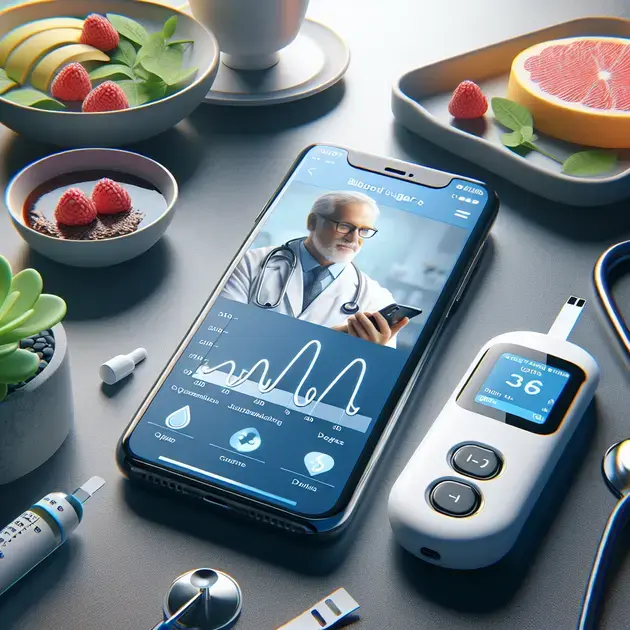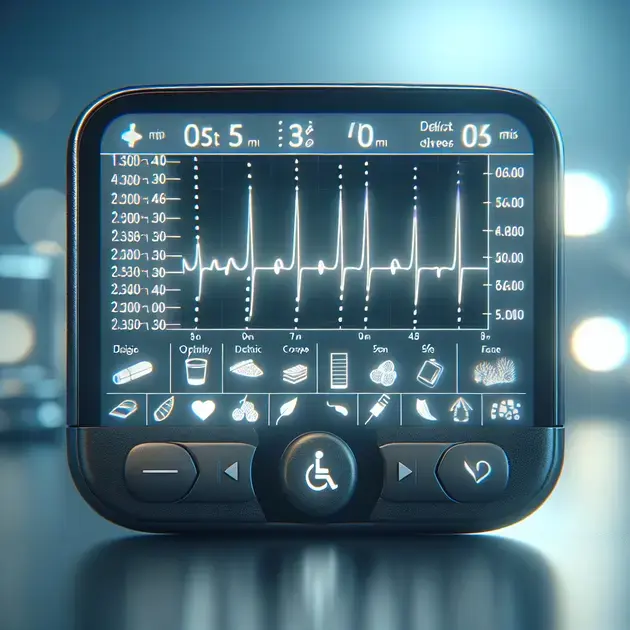Managing your blood sugar levels after meals is crucial for maintaining overall health, especially for those managing diabetes. Knowing the ideal blood sugar level after eating can help prevent complications and promote long-term health. Keeping these levels within the recommended range not only helps in stabilizing energy levels but also reduces the risk of chronic diseases. But what exactly should these numbers be? Let’s dive into understanding these vital figures.
Recent guidelines suggest that for most healthy adults, the target blood sugar level after eating should be under 140 mg/dL. This measurement should ideally be taken two hours after the start of a meal, as this is when your blood sugar response is most pronounced. Staying within this range helps to minimize the risk of developing problems such as cardiovascular disease, nerve damage, or kidney issues over time. Adjustments might be needed based on individual health conditions, so consulting with a healthcare provider is essential.

The Importance of Monitoring Blood Sugar Levels after Eating
Monitoring blood sugar levels after eating is crucial for individuals with diabetes to ensure their blood glucose stays within a healthy range. High blood sugar levels after meals can lead to complications such as cardiovascular disease, nerve damage, and kidney problems. By monitoring blood sugar levels after eating, individuals can make informed decisions about their diet, medication, and lifestyle habits to better manage their condition.
A recommended way to monitor blood sugar levels after eating is by using mobile apps such as MySugr or Glucose Buddy. These apps allow users to log their meals, track their blood sugar readings, and identify patterns to make adjustments accordingly. By regularly inputting data into these apps, individuals can visualize their blood sugar trends and share the information with their healthcare providers for further guidance.
Here is a step-by-step guide on how to monitor blood sugar levels after eating using the MySugr app:
Step 1:
Download the MySugr app from the App Store or Google Play Store on your smartphone.
Step 2:
Create an account and set up your profile with basic information such as age, weight, and diabetes type.
Step 3:
Log your meals by entering the type of food consumed and the portion size.
Step 4:
Check your blood sugar levels using a glucometer and input the readings into the app.
Step 5:
Review the data to identify any patterns or trends in your blood sugar levels after eating.
Recommended Blood Sugar Level after Meals for Healthy Adults
For healthy adults, the recommended blood sugar level after meals is typically below 140 mg/dL (7.8 mmol/L) two hours after eating. Maintaining blood sugar levels within this range is important to prevent spikes that could lead to long-term health issues such as insulin resistance and weight gain. By following dietary guidelines, engaging in regular physical activity, and monitoring blood sugar levels, healthy adults can support overall well-being.
One useful resource for tracking blood sugar levels and meal effects is the Dexcom G6 Continuous Glucose Monitoring (CGM) system. This device provides real-time glucose readings every five minutes, allowing users to see how their food choices impact their blood sugar levels throughout the day.
Here is a step-by-step guide on using the Dexcom G6 CGM system to monitor blood sugar levels after meals:
Step 1:
Consult with your healthcare provider to obtain a prescription for the Dexcom G6 CGM system.
Step 2:
Insert the sensor under the skin as per the manufacturer’s instructions.
Step 3:
Connect the sensor to the Dexcom receiver or compatible smart device to start receiving glucose readings.
Step 4:
After meals, monitor the trend graph on the device to observe changes in blood sugar levels.
Step 5:
Adjust your diet or activity levels based on the data to maintain optimal blood sugar readings.
Consulting a Healthcare Provider for Individual Adjustments
Individuals with diabetes or specific health conditions may require personalized adjustments to their blood sugar monitoring and management. Consulting a healthcare provider, such as an endocrinologist or a certified diabetes educator, can provide tailored guidance and support based on an individual’s medical history and current lifestyle.
Telemedicine platforms like Teladoc or Amwell offer convenient options for virtual consultations with healthcare providers. Through these platforms, individuals can schedule appointments, discuss their blood sugar monitoring practices, and receive recommendations for optimizing their post-meal blood sugar levels.
Here is a step-by-step guide on consulting a healthcare provider for individual adjustments using the Teladoc platform:
Step 1:
Visit the Teladoc website or download the app on your smartphone.
Step 2:
Create an account and provide relevant medical history information, including details about your diabetes management.
Step 3:
Schedule a virtual appointment with an available healthcare provider specializing in diabetes care.
Step 4:
During the consultation, discuss your current blood sugar monitoring routine and any challenges you may be facing.
Step 5:
Follow the provider’s recommendations for individualized adjustments to your blood sugar monitoring strategy.

**Understanding Optimal Blood Glucose Levels Following a Meal**
Introduction
Understanding optimal blood glucose levels following a meal is crucial for maintaining overall health and well-being. Blood sugar levels can significantly impact our energy levels, mood, and long-term health outcomes. Knowing how to manage blood glucose levels effectively can help prevent conditions such as diabetes and promote a balanced lifestyle.
The Importance of Blood Glucose Levels
After a meal, the body breaks down carbohydrates into glucose, which serves as the primary source of energy for cells. Optimal blood glucose levels are essential for proper brain function, muscle performance, and overall metabolic health. When blood sugar levels are too high or too low, various health issues can arise.
Factors Affecting Blood Glucose Levels
Several factors can influence postprandial blood sugar levels, including the type of food consumed, the timing of meals, and individual insulin sensitivity. Carbohydrate-rich foods tend to cause a more significant spike in blood glucose levels compared to protein or fat. Additionally, physical activity and stress levels can also impact how the body regulates blood sugar.
Strategies for Managing Blood Glucose Levels
To optimize blood glucose levels following a meal, consider incorporating foods with a low glycemic index, such as whole grains, vegetables, and lean proteins. Balancing meals with a combination of carbohydrates, protein, and healthy fats can help stabilize blood sugar levels. Regular physical activity and stress-reducing practices like meditation can also support healthy blood glucose management.
Monitoring Blood Glucose Levels
Individuals with specific health concerns, such as diabetes, may benefit from monitoring their blood glucose levels regularly. Devices like glucometers can provide real-time feedback on blood sugar levels, allowing for adjustments in diet and lifestyle as needed. Consulting with a healthcare provider for personalized guidance on blood glucose management is essential for long-term health.
Conclusion
Understanding the significance of optimal blood glucose levels post-meal is crucial for overall health and well-being. It plays a pivotal role in maintaining energy levels, mood, and long-term health outcomes. Effective management of blood glucose levels can aid in preventing conditions like diabetes and promoting a balanced lifestyle, ensuring a healthier future.
The Impact of Balanced Blood Glucose
Proper blood glucose levels post-meal are essential for optimal brain function, muscle performance, and overall metabolic health. Deviations from the ideal levels can lead to a range of health issues. Hence, being mindful of what we eat and how it influences our blood sugar levels is key to sustaining good health in the long run.
Strategies for Healthier Blood Glucose
Incorporating foods with a low glycemic index, such as whole grains, vegetables, and lean proteins, can help stabilize blood sugar levels post-meal. It’s important to strike a balance between carbohydrates, protein, and healthy fats in our meals. Adopting regular physical activity and stress-relieving techniques like meditation can further aid in managing blood glucose effectively.
Prioritizing Blood Glucose Monitoring
Individuals with specific health concerns, like diabetes, can benefit significantly from regular blood glucose monitoring. Utilizing devices such as glucometers for real-time feedback empowers individuals to make necessary adjustments to their diet and lifestyle. Seeking guidance from healthcare providers for personalized support in blood glucose management is a crucial step towards ensuring long-term well-being.
